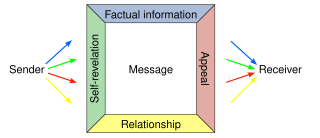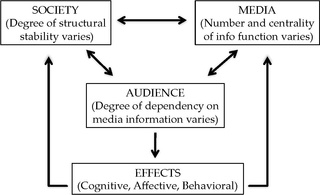 W
WCommunication for Development (C4D) is all the different types of communication that need to take place in societies if sustainable democratic development is to occur.
 W
WA confession is a statement – made by a person or by a group of persons – acknowledging some personal fact that the person would ostensibly prefer to keep hidden. The term presumes that the speaker is providing information that he believes the other party is not already aware of, and is frequently associated with an admission of a moral or legal wrong:In one sense it is the acknowledgment of having done something wrong, whether on purpose or not. Thus confessional texts usually provide information of a private nature previously unavailable. What a sinner tells a priest in the confessional, the documents criminals sign acknowledging what they have done, an autobiography in which the author acknowledges mistakes, and so on, are all examples of confessional texts.
 W
WA content format is an encoded format for converting a specific type of data to displayable information. Content formats are used in recording and transmission to prepare data for observation or interpretation. This includes both analog and digitized content. Content formats may be recorded and read by either natural or manufactured tools and mechanisms.
 W
WDataveillance is the practice of monitoring and collecting online data as well as metadata. The word is a portmanteau of data and surveillance. Dataveillance is concerned with the continuous monitoring of users' communications and actions across various platforms. For instance, dataveillance refers to the monitoring of data resulting from credit card transactions, GPS coordinates, emails, social networks, etc. Using digital media often leaves traces of data and creates a digital footprint of our activity. Unlike sousveillance, this type of surveillance is not often known and happens discreetly. Dataveillance may involve the surveillance of groups of individuals. There exist three types of dataveillance: personal dataveillance, mass dataveillance, and facilitiative mechanisms.
 W
WDefensive communication is a communicative behavior that occurs within relationships, work environments, and social groups when an individual reacts in a defensive manner in response to a self-perceived flaw or a threat from outsiders. Defensive responses can be triggered by external events and by feelings of anxiety, insecurity, and sensitivity, and often occurs in circumstances where people feel negatively evaluated, controlled, or persuaded by others. Sigmund Freud was one of the first scientists to research the subject of defensive communication in depth, during his development of psychodynamic theory. Defensiveness creates inefficient and damaging communication in social interactions when people deny their flaws, project their flaws on others, or use judgmental communication techniques.
 W
WA discussion moderator or debate moderator is a person whose role is to act as a neutral participant in a debate or discussion, holds participants to time limits and tries to keep them from straying off the topic of the questions being raised in the debate. Sometimes moderators may ask questions intended to allow the debate participants to fully develop their argument in order to ensure the debate moves at pace.
 W
WAn exhibition, in the most general sense, is an organized presentation and display of a selection of items. In practice, exhibitions usually occur within a cultural or educational setting such as a museum, art gallery, park, library, exhibition hall, or World's fairs. Exhibitions can include many things such as art in both major museums and smaller galleries, interpretive exhibitions, natural history museums and history museums, and also varieties such as more commercially focused exhibitions and trade fairs.
 W
WFace-Negotiation Theory is a theory conceived by Stella Ting-Toomey in 1985, to understand how people from different cultures manage rapport and disagreements. The theory posited "face", or self-image when communicating with others, as a universal phenomenon that pervades across cultures. In conflicts, one's face is threatened; and thus the person tends to save or restore his or her face. This set of communicative behaviors, according to the theory, is called "facework". Since people frame the situated meaning of "face" and enact "facework" differently from one culture to the next, the theory poses a cultural-general framework to examine facework negotiation. It is important to note that the definition of face varies depending on the people and their culture and the same can be said for the proficiency of facework.
 W
WA factoid is either a false statement presented as a fact, or a true but brief or trivial item of news or information.
 W
WA fence insert is an object designed to fit or clip into standard chain link fencing. There are three main objectives typically fulfilled by fence inserts. One is to provide privacy by converting chain link fencing into an opaque surface. Another is to exploit the fence as a site for signage, often providing low-resolution displays of corporate logos, sports mascots or verbal messages. A third objective of fence inserts is to decorate otherwise plain fencing.
 W
WThe four-sides model is a communication model by Friedemann Schulz von Thun. According to this model every message has four facets though not the same emphasis might be put on each. The four sides of the message are fact, self-revealing, relationship, and appeal.
 W
WGeography of media and communication is an interdisciplinary research area bringing together human geography with media studies and communication theory. Research addressing the geography of media and communication seeks to understand how acts of communication and the systems they depend on both shape and are shaped by geographical patterns and processes.
 W
WA global network is any communication network which spans the entire Earth. The term, as used in this article refers in a more restricted way to bidirectional communication networks, and to technology-based networks. Early networks such as international mail and unidirectional communication networks, such as radio and television, are described elsewhere.
 W
WHeritage interpretation refers to all the ways in which information is communicated to visitors to an educational, natural or recreational site, such as a museum, park or science centre. More specifically it is the communication of information about, or the explanation of, the nature, origin, and purpose of historical, natural, or cultural resources, objects, sites and phenomena using personal or non-personal methods. Some international authorities in museology prefer the term mediation for the same concept, following usage in other European languages.
 W
WHow the World Was One: Beyond the Global Village is Arthur C. Clarke's history and survey of the communications revolution, published in 1992. The title includes an intentional pun; in English How the World Was Won would sound exactly the same.
 W
WInteraction is a kind of action that occurs as two or more objects have an effect upon one another. The idea of a two-way effect is essential in the concept of interaction, as opposed to a one-way causal effect. Closely related terms are interactivity and interconnectivity, of which the latter deals with the interactions of interactions within systems: combinations of many simple interactions can lead to surprising emergent phenomena. Interaction has different tailored meanings in various sciences. Changes can also involve interaction.
 W
WInternal communications (IC) is the function responsible for effective communications among participants within an organization. The scope of the function varies by organization and practitioner, from producing and delivering messages and campaigns on behalf of management, to facilitating two-way dialogue and developing the communication skills of the organization's participants.
 W
WIn a large organization with many employees, there is frequently an internal mail system. The post room sorts the incoming mail and the 'mailboy' takes it around on a trolly to the various pigeon-holes and direct to the desks of other colleagues.
 W
WA liaison officer is a person who liaises between two organizations to communicate and coordinate their activities. Generally, liaison officers are used to achieve the best utilization of resources or employment of services of one organization by another. Liaison officers often provide technical or subject matter expertise of their parent organization. Usually an organization embeds a liaison officer into another organization to provide face-to-face coordination.
 W
WA mailroom (US) or post room (UK) is a room in which incoming and outgoing mail is processed and sorted. Mailrooms are commonly found in schools, offices, apartment buildings, and the generic post office. A person who works in a mailroom is known as a mailroom clerk or mailboy and the head person is called the postmaster. The mailroom is responsible for a company's incoming and outgoing mail. A mailroom clerk prepares outgoing mail and packages prior to their being sent out via the post office or other carrier.
 W
WMatrix is an open standard and communication protocol for real-time communication. It aims to make real-time communication work seamlessly between different service providers, in the way that standard Simple Mail Transfer Protocol email currently does for store-and-forward email service, by allowing users with accounts at one communications service provider to communicate with users of a different service provider via online chat, voice over IP, and videotelephony. Such protocols have been around before such as XMPP but Matrix is not based on that or another communication protocol.
 W
WMedia system dependency theory (MSD), or simply media dependency, was developed by Sandra Ball-Rokeach and Melvin Defleur in 1976. The theory is grounded in classical sociological literature positing that media and their audiences should be studied in the context of larger social systems. MSD ties together the interrelations of broad social systems, mass media, and the individual into a comprehensive explanation of media effects. At its core, the basic dependency hypothesis states that the more a person depends on media to meet needs, the more important media will be in a person's life, and therefore the more effects media will have on a person.
 W
WA message is a discrete unit of communication intended by the source for consumption by some recipient or group of recipients. A message may be delivered by various means, including courier, telegraphy, carrier pigeon and electronic bus. A message can be the content of a broadcast. An interactive exchange of messages forms a conversation.
 W
WNews is information about current events. This may be provided through many different media: word of mouth, printing, postal systems, broadcasting, electronic communication, or through the testimony of observers and witnesses to events.
 W
WNonviolent communciation is an approach to communication based on principles of nonviolence. It is not a technique to end disagreements, but rather a method designed to increase empathy and improve the quality of life of those who utilize the method and the people around them.
 W
WA panel discussion, or simply a panel, involves a group of people gathered to discuss a topic in front of an audience, typically at scientific, business, or academic conferences, fan conventions, and on television shows. Panels usually include a moderator who guides the discussion and sometimes elicits audience questions, with the goal of being informative and entertaining. Film panels at fan conventions have been credited with boosting box office returns by generating advance buzz.
 W
WA pigeon-hole messagebox is an internal mail system commonly used for communication in organisations, workplaces and educational institutes in the United Kingdom and other countries. Documents and messages are placed in a person's pigeon-hole for them to collect; they can reply by putting a response inside the sender's pigeon-hole.
 W
WIn philosophy, a point of view is a specific attitude or manner through which a person thinks about something. This figurative usage of the expression dates back to 1760. In this meaning, the usage is synonymous with one of the meanings of the term perspective.
 W
WPseudo-listening is a type of non-listening that consists of appearing attentive in conversation while actually ignoring or only partially listening to the other speaker. The intent of pseudo-listening is not to listen, but to cater to some other personal need of the listener. The word pseudo-listening is a compound word composed of the individual words pseudo, and listening. An example of pseudo-listening is trying to multitask by talking on the phone while watching television or completing work. Pseudo-listening is the most ineffective way to communicate because after the conversation one will not have retained much of the information that was said.
 W
WIn public relations and communication science, publics are groups of individual people, and the public is the totality of such groupings. This is a different concept to the sociological concept of the Öffentlichkeit or public sphere. The concept of a public has also been defined in political science, psychology, marketing, and advertising. In public relations and communication science, it is one of the more ambiguous concepts in the field. Although it has definitions in the theory of the field that have been formulated from the early 20th century onwards, and suffered more recent years from being blurred, as a result of conflation of the idea of a public with the notions of audience, market segment, community, constituency, and stakeholder.
 W
WRadio is the technology of signaling and communicating using radio waves. Radio waves are electromagnetic waves of frequency between 30 hertz (Hz) and 300 gigahertz (GHz). They are generated by an electronic device called a transmitter connected to an antenna which radiates the waves, and received by a radio receiver connected to another antenna. Radio is very widely used in modern technology, in radio communication, radar, radio navigation, remote control, remote sensing and other applications.
 W
WA recognition signal is a signal whereby a person, a ship, an airplane or something else is recognized. They can be used during war or can be used to help the police recognize each other during undercover operations. It can also be used in biology to signal that a molecule or chemical is to be bound to another molecule.
 W
WA recording format is a format for encoding data for storage on a storage medium. The format can be container information such as sectors on a disk, or user/audience information (content) such as analog stereo audio. Multiple levels of encoding may be achieved in one format. For example, a text encoded page may contain HTML and XML encoding, combined in a plain text file format, using either EBCDIC or ASCII character encoding, on a UDF digitally formatted disk.
 W
WThe term red flag could mean either a literal flag used for signaling or, as a metaphor, a sign of some particular problem requiring attention.
 W
WIn psychology and sociology, relationship aspect refers to the quality of interpersonal cooperation in terms of intuitive, emotional and social inner relatedness, which makes people feel connected outside of the content aspect.
 W
WSafety signs are a type of sign designed to warn of hazards, indicate mandatory actions or required use of Personal protective equipment, prohibit actions or objects, identify the location of firefighting or safety equipment, or marking of exit routes.
 W
WSelf-archiving is the act of depositing a free copy of an electronic document online in order to provide open access to it. The term usually refers to the self-archiving of peer-reviewed research journal and conference articles, as well as theses and book chapters, deposited in the author's own institutional repository or open archive for the purpose of maximizing its accessibility, usage and citation impact. The term green open access has become common in recent years, distinguishing this approach from gold open access, where the journal itself makes the articles publicly available without charge to the reader.
 W
WA sign is an object, quality, event, or entity whose presence or occurrence indicates the probable presence or occurrence of something else. A natural sign bears a causal relation to its object—for instance, thunder is a sign of storm, or medical symptoms a sign of disease. A conventional sign signifies by agreement, as a full stop signifies the end of a sentence; similarly the words and expressions of a language, as well as bodily gestures, can be regarded as signs, expressing particular meanings. The physical objects most commonly referred to as signs generally inform or instruct using written text, symbols, pictures or a combination of these.
 W
WSocial and behavior change communication (SBCC), often also only "BCC" or "Communication for Development (C4D)" is an interactive process of any intervention with individuals, group or community to develop communication strategies to promote positive behaviors which are appropriate to their settings and thereby solving the world's most pressing health problems. This in turn provides a supportive environment which will enable people to initiate, sustain and maintain positive and desirable behavior outcomes.
 W
WSocial information processing theory, also known as SIP, is an interpersonal communication theory and media studies theory developed in 1992 by Joseph Walther. Social information processing theory explains online interpersonal communication without nonverbal cues and how people develop and manage relationships in a computer-mediated environment. Walther argued that online interpersonal relationships may demonstrate the same or even greater relational dimensions and qualities (intimacy) as traditional FtF relationships. However, due to the limited channel and information, it may take longer to achieve than FtF relationships. These online relationships may help facilitate interactions that would not have occurred face-to-face due to factors such as geography and intergroup anxiety.
 W
WSports communication is an aspect of communication studies which specializes in the study of communication in a sports setting. It can encompass the study of interpersonal and organizational communication between participants within a particular sport ; communication between sports participants, fans, and the media; and the way that sports are represented and communicated in the media. Sports communication is something that happens at different levels ranging from preschool to college level. It's not restricted to professionals. It happens constantly and works best with people that are willing to work well as a team. If everyone is on board and has positive thoughts and communication, it becomes very dismantling to the person receiving the message. It is not only for positive talk, though, because negative sports communication happens all the time.
 W
WSummit Series is an American organization that hosts conferences and events for young entrepreneurs, artists and activists. Events organized by the group include an annual invitation-only conference during which participants discuss topics including business practices, technological innovation, and philanthropy. Summit Series attendees have included Bill Clinton, Ted Turner and Richard Branson. Summit Series was founded in 2008 by Elliott Bisnow, Brett Leve, Jeff Rosenthal, Jeremy Schwartz, and Ryan Begelman.
 W
WThumb tribe or sometimes thumb generation is the younger generation with members who are more adept at texting using their thumbs than talking on the phone. The concept identifies a trend among young people who use mobile phones for many activities, such as texting, email, entertainment, and conversations, as opposed to using keyboards with traditional desktop computers, and marks a shift in the favorite digit such that activities typically done by the forefinger, such as pointing at things or ringing doorbells, are being done with the thumb. The term thumb tribe has been used by marketers to identify younger consumers and in politics to identify persons who are not part of the younger generation, such as American politician Mitt Romney, who may have a mobile phone but does not use it dexterously. According to researchers, this has led to the thumb being physically stronger and more flexible for many young people. There are medical implications as well; excessive use of thumbs can lead to muscle pain and possible occupational problems.
 W
WTower music is a musical performance from the top of a tower. It can also designate the music composed for or played in such a performance.
 W
WTranslation is the communication of the meaning of a source–language text by means of an equivalent target-language text. The English language draws a terminological distinction between translating and interpreting ; under this distinction, translation can begin only after the appearance of writing within a language community.
 W
WThe visual language is a system of communication using visual elements. Speech as a means of communication cannot strictly be separated from the whole of human communicative activity which includes the visual and the term 'language' in relation to vision is an extension of its use to describe the perception, comprehension and production of visible signs.
 W
WA welcome is a kind of greeting designed to introduce a person to a new place or situation, and to make them feel at ease. The term can similarly be used to describe the feeling of being accepted on the part of the new person.